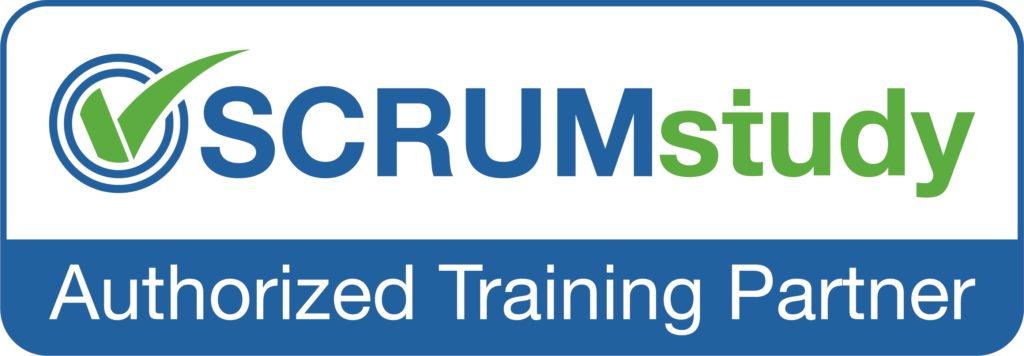Type
Virtual
Classroom ILT
Skill Level
Available dates
Learning Path
Virtual
Duration
1 Day

TYPE
Virtual
Classroom ILT
LEARNING PATH
SKILL LEVEL
DURATION
AVAILABLE DATES
Choose date
R13 900,00
Price excluding VAT
Introduction
Rapid changes in technology, market demands, and expectations have paved the way for the conceptualization and implementation of Agile methods and values in many organizations. Agile relies on adaptive planning and iterative development and delivery. It focuses primarily on the value of people in getting the job done effectively. Scrum Agile Master Certified (SAMC™) Professionals should appreciate the concepts of Agile development and have the ability to compare and choose the Agile methodology appropriate in a given situation.
SCRUMstudy’s online live proctored exams allow you to take your certification exams from the comfort of your home using a webcam and a reliable internet connection.
Professional Development Units (PDUs) 21.
Audience Profile
This certification is appropriate for anyone interested in becoming familiar with the concepts and practices of Agile Project Delivery, and who wants to have a working knowledge of the various Agile methodologies.
Pre-requisites
There is no formal prerequisite for this certification. However, Scrum Developer Certified (SDC™) or Scrum Master Certified (SMC™) professionals will be able to easily understand the concepts required for the certification exam.
Course objectives
After completing this course:
- Participants will be familiar with the concepts and practices of Agile project delivery.
- Participants will be equipped with detailed knowledge and understanding of available Agile methodologies.
- Participants will be able to compare and choose the methodologies or parts of methodologies that are most
- relevant to their current and future situations.
- Participants will be armed with the proper tools to take the lead in Agile projects and to address and resolve
- Agile issues in their organizations
Course content
| Session 1: Agile Overview | |
|
|
|
|
|
|
|
|
| Session 2: Domains of Agile Practices | |
|
|
|
|
|
|
|
|
| Session 3: Lean Kanban Software Development | |
|
|
| Session 4: Understanding Lean Software Development | |
|
|
| Session 5: Understanding Kanban | |
|
|
|
|
|
|
| Session 6: Scrum |
|
|
|
|
|
|
|
|
| Session 7: Extreme Programming (XP) |
|
|
|
|
|
|
|
|
| Session 8: Test-Driven Development (TDD) | |
|
|
| Session 9: Dynamic Systems Development Method (DSDM) | |
|
|
|
|
| Session 10: Crystal | |
|
|
|
|
|
|
| Session 11: Feature Driven Development (FDD) |
|
|
|
|
|
| Session 13: Comparison of Agile Methods |
| Session 14: Best Fit Analysis Tool |
Associated certifications and exam
This course prepares students to write the SCRUMstuy’s Agile Master Certified Exam.
On successful completion of this course students will receive a Torque IT attendance certificate.

Scrum Overview
Scrum is the most popular Agile framework. It is an adaptive, iterative, fast, flexible, and effective methodology designed to deliver significant value quickly and throughout a project.
Scrum ensures transparency in communication and creates an environment of collective accountability and continuous progress. The Scrum framework, as described in the Scrum Body of Knowledge Guide (SBOK™), is structured in such a way that it supports product and service development in all types of industries and in any type of project, irrespective of its complexity.
A Scrum project involves a collaborative effort to create a new product, service, or other result as defined in the Project Vision Statement. Projects are impacted by constraints of time, cost, scope, quality, resources, organizational capabilities, and other limitations that make them difficult to plan, execute, manage, and ultimately succeed. However, successful implementation of the results of a finished project provides significant business benefits to an organization. It is therefore important for organizations to select and practice an appropriate project delivery methodology.
A key strength of Scrum lies in its use of cross-functional, self-organized, and empowered teams who divide and execute their work in short, concentrated work cycles called Sprints. The focus of Scrum on value-driven delivery helps Scrum Teams deliver results as early in the project as possible.
Scrum vs. Traditional Project Management Traditional project management emphasizes on conducting detailed upfront planning for the project with emphasis on fixing the scope, cost and schedule – and managing those parameters. Whereas, Scrum encourages data-based, iterative decision making in which the primary focus is on delivering products that satisfy customer requirements.
To deliver the greatest amount of value in the shortest amount of time, Scrum promotes prioritization and Time-boxing over fixing the scope, cost and schedule of a project. An important feature of Scrum is self-organization, which allows the individuals who are actually doing the work to estimate and take ownership of tasks.

